How to perfect your grip for maximum control in lacrosse. What are the best ways to practice low-to-ground techniques. How to develop essential ball handling skills. Why is adding movement crucial for improving coordination. How to gradually increase throw heights for better catches. What are the key steps to master the stick flip. How to time ball release perfectly for smooth catches.
The Foundation: Perfecting Your Lacrosse Stick Grip
Mastering the brine clutch rise begins with a solid foundation – your grip. A proper grip provides the control and flexibility needed to execute this impressive lacrosse stick trick. Let’s explore the key elements of an effective grip:
- Dominant hand placement: Low on the shaft, near the throat of the head
- Thumb position: Wrapped around the shaft
- Index finger: Resting along the side of the shaft
- Middle, ring, and pinky fingers: Curled lightly around the shaft
- Guide hand: Positioned at the bottom of the shaft
Finding the perfect balance between control and flexibility is crucial. Too tight a grip restricts movement, while too loose a hold compromises control. Experiment with slight adjustments to find your optimal grip.

Cradling the Ball: Finding the Sweet Spot
Cradling the ball effectively is just as important as your stick grip. The goal is to maintain enough control to manipulate the ball while allowing for easy release. How can you achieve this balance? Practice cradling with varying degrees of pressure until you find the sweet spot that offers both control and quick release.
Building Confidence: Low-to-Ground Practice Techniques
When first attempting the brine clutch rise, it’s essential to start with low-risk, confidence-building exercises. Begin by practicing close to the ground, focusing on the fundamental movements required for the trick.
- Flip the stick head over
- Toss the ball just 1-2 feet in the air
- Focus on smooth head flipping
- Release the ball at the right moment
- Catch the ball cleanly in the pocket
Why is starting low so important? It allows you to build muscle memory and coordination without the fear of dropping the ball from a greater height. This approach helps you develop a solid foundation for more advanced techniques.

Developing Essential Ball Handling Skills
Before diving into the complexities of the brine clutch rise, it’s crucial to hone your basic ball handling abilities. How can you improve these fundamental skills?
- Practice tossing and catching the ball
- Experiment with different throw heights
- Vary ball trajectories and speeds
- Pay attention to ball release and catch timing
- Try catching with quick head flips
By focusing on these exercises, you’ll develop a better feel for the ball and improve your overall control. This increased familiarity will make executing the brine clutch rise significantly easier.
Quick Flip Catches: A Key Skill
One particularly useful drill involves catching the ball with a quick flip of the stick head, without throwing it first. This exercise helps you understand how the ball interacts with the pocket at different angles, a crucial aspect of the brine clutch rise.
The Importance of Movement in Lacrosse Trick Mastery
While stationary practice is valuable, incorporating movement into your training regimen is essential for truly mastering lacrosse stick tricks. Why is movement so crucial?

- Improves overall coordination
- Enhances ability to perform tricks in game-like situations
- Develops multitasking skills
- Increases difficulty, leading to greater skill improvement
To incorporate movement into your practice, start by walking slowly while tossing and catching the ball. As your skills improve, gradually increase your speed. Eventually, you should be able to sprint, change direction, and twist your body while executing catches.
Challenging Your Coordination
How can you push your coordination skills even further? Try these advanced movement drills:
- Catch while changing direction suddenly
- Perform catches while spinning in a circle
- Practice stick tricks while jumping or hopping
- Incorporate lateral movements into your drills
By mastering these moving catches, you’ll find the brine clutch rise becomes much more manageable, even in dynamic situations.
Pushing Your Limits: Increasing Throw Heights
Once you’ve mastered basic tosses and catches, it’s time to challenge yourself by increasing the height of your throws. Why is this progression important?

- Forces you to perfect timing and technique
- Improves hand-eye coordination
- Enhances your ability to track the ball
- Builds confidence in handling high catches
Remember, the key to success is gradual progression. Don’t try to max out your throw height immediately. Instead, incrementally increase the height as your skills improve. This approach allows your coordination and reflexes to adapt without becoming overwhelmed.
The Physics of High Throws
Understanding the physics behind high throws can help you improve your technique. As the ball goes higher, it experiences greater acceleration due to gravity on its descent. This increased speed requires more precise timing and quicker reactions for a successful catch.
The Art of the Flip: Mastering Quick Stick Head Rotation
The core of the brine clutch rise lies in the rapid flip of the stick head. This movement is crucial for positioning the pocket to catch the ball. How can you master this essential technique?
- Break down the movement into two phases
- Practice pointing the head down by rolling your top wrist forward
- Work on whipping the head upright by snapping your bottom wrist back
- Isolate these movements and gradually build speed
- Focus on aligning the pocket properly to receive the ball
The key to perfecting the flip is consistent practice. Start slowly, focusing on the correct form and gradually increase your speed as you become more comfortable with the movement.

Common Flip Mistakes to Avoid
As you practice the flip, be aware of these common errors:
- Flipping too slowly, causing the ball to hit the ground
- Overly aggressive flips that misalign the pocket
- Inconsistent wrist movements leading to erratic flips
- Neglecting to follow through with the flip motion
By identifying and correcting these mistakes early, you’ll progress more quickly in mastering the brine clutch rise.
Perfecting Your Timing: The Key to Smooth Ball Release and Catch
Timing is everything when it comes to executing a flawless brine clutch rise. The perfect release allows the ball to sync with your stick flip, resulting in a clean catch. How can you develop this crucial timing?
- Practice releasing the ball as you initiate the downward flip motion
- Focus on the synchronization between your release and the stick rotation
- Start with slow, deliberate movements and gradually increase speed
- Pay attention to the ball’s trajectory and adjust your release accordingly
Remember, the optimal release occurs right as you begin the downward motion of the flip. This timing allows the head to complete its rotation, aligning the pocket for a smooth reception of the ball.
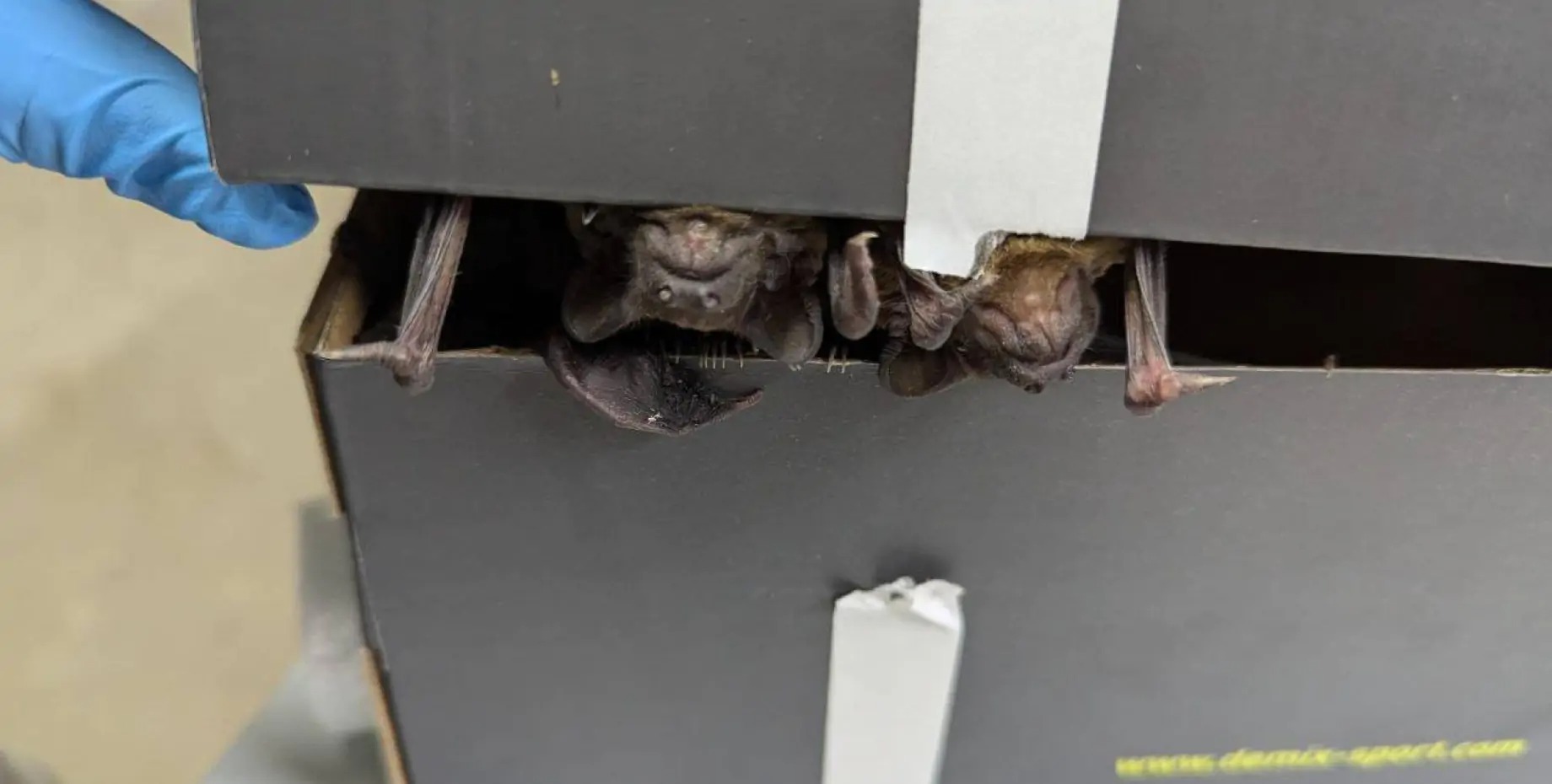
Troubleshooting Timing Issues
If you’re struggling with timing, consider these common problems and solutions:
- Releasing too early: The ball hits the ground before you complete the flip. Solution: Delay your release slightly.
- Releasing too late: The ball crashes into the side of the stick. Solution: Release earlier in your flip motion.
- Inconsistent releases: Vary between too early and too late. Solution: Practice with a metronome to develop a consistent rhythm.
Advanced Techniques: Accelerating the Stick Head for Increased Ball Speed
As you become more proficient with the brine clutch rise, you can add flair and difficulty by increasing the speed of your catch. How can you achieve this?
- Focus on accelerating the stick head through the flip motion
- Use your wrists to generate more whip in the stick
- Practice quick, snappy movements rather than long, sweeping motions
- Incorporate your forearms and elbows for additional power
By mastering these techniques, you’ll be able to perform the brine clutch rise with impressive speed and style.

The Benefits of Increased Catch Speed
Why should you work on accelerating your stick head? Fast catches offer several advantages:
- More impressive visual effect
- Increased difficulty, showcasing advanced skill
- Better preparation for game situations requiring quick stick work
- Improved overall stick control and coordination
Remember, while speed is impressive, accuracy should always be your primary focus. Only increase your speed once you’ve mastered the basic technique.
Combining Elements: Integrating Movement, Height, and Speed
Once you’ve practiced individual components of the brine clutch rise, it’s time to bring everything together. How can you effectively combine movement, height, and speed?
- Start with simple combinations (e.g., moving while increasing throw height)
- Gradually add complexity (e.g., sprinting while performing high-speed catches)
- Practice transitioning between different elements smoothly
- Create drills that incorporate all aspects of the trick
By integrating these elements, you’ll develop a more comprehensive mastery of the brine clutch rise and be able to perform it in various situations.

Creating Custom Drills
To further enhance your skills, consider creating personalized drills that challenge you in multiple areas simultaneously. Here are some ideas:
- The “Sprint and Flip”: Sprint 10 yards, perform a brine clutch rise, then immediately sprint back
- The “Height Ladder”: Perform the trick with progressively higher throws, moving between predetermined markers
- The “Speed Challenge”: Set a timer and see how many successful brine clutch rises you can perform in one minute
Mental Preparation: Developing Focus and Confidence
Mastering the brine clutch rise isn’t just about physical skills – mental preparation plays a crucial role. How can you develop the focus and confidence needed to excel?
- Practice visualization techniques
- Set achievable goals and track your progress
- Develop a pre-trick routine to center yourself
- Learn to stay calm under pressure
- Embrace failures as learning opportunities
By honing your mental game alongside your physical skills, you’ll be better equipped to perform the brine clutch rise consistently and impressively.
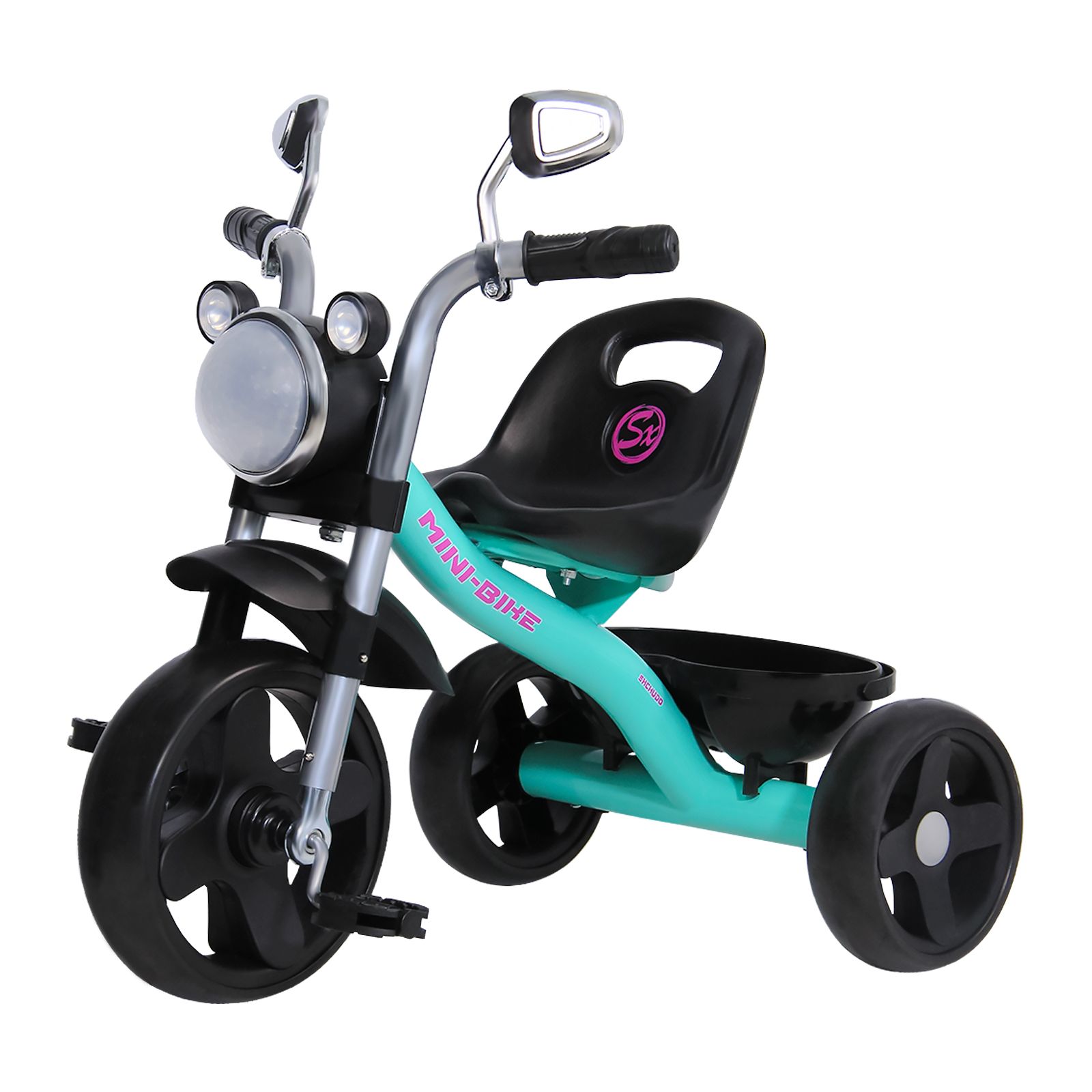
Overcoming Performance Anxiety
Many players struggle with anxiety when attempting tricks, especially in front of others. Here are some strategies to overcome this:
- Practice deep breathing exercises
- Use positive self-talk to boost confidence
- Gradually expose yourself to performing in front of others
- Focus on the process rather than the outcome
- Remember that even professionals make mistakes
Applying Your Skills: Incorporating the Brine Clutch Rise in Games
While mastering the brine clutch rise as a standalone trick is impressive, the ultimate goal is to incorporate it into your gameplay. How can you effectively use this skill during matches?
- Identify appropriate moments to use the trick (e.g., during transitions or to evade defenders)
- Practice integrating the brine clutch rise into passing and shooting drills
- Use the trick to create space or misdirect opponents
- Develop combinations with other stick tricks for unpredictable play
Remember, while flashy tricks can be effective, they should always serve a purpose in your overall game strategy.

Balancing Style and Substance
When incorporating tricks like the brine clutch rise into your gameplay, it’s crucial to strike a balance between style and substance. Consider these tips:
- Use tricks sparingly to maintain their effectiveness
- Ensure that your fundamental skills remain sharp
- Be prepared to adapt if defenders anticipate your tricks
- Use tricks to enhance your play, not define it
Continual Improvement: Advanced Variations and Combinations
Once you’ve mastered the basic brine clutch rise, there’s always room for growth and innovation. How can you take your skills to the next level?
- Experiment with one-handed variations
- Try performing the trick while jumping or in mid-air
- Combine the brine clutch rise with other stick tricks
- Challenge yourself to perform multiple consecutive brine clutch rises
- Invent your own unique variations
By continuously pushing your boundaries and exploring new possibilities, you’ll not only improve your brine clutch rise but also enhance your overall stick skills and creativity.

Learning from Others
While personal practice is essential, learning from others can accelerate your progress. Consider these methods:
- Watch videos of professional players performing advanced tricks
- Attend clinics or workshops focused on stick skills
- Join online communities to share tips and learn from fellow enthusiasts
- Practice with more experienced players who can offer guidance
Remember, the journey to mastering the brine clutch rise is ongoing. Embrace the process, stay dedicated, and enjoy the progress you make along the way. With consistent practice and a willingness to learn, you’ll soon be impressing teammates and opponents alike with your stick trick prowess.
Perfect Your Grip: Proper hand placement for maximum control
Gripping the lacrosse stick properly is the foundation for performing any trick, especially one as difficult as the brine clutch rise. Place your dominant hand low on the shaft, near the throat of the head. Wrap your thumb around the shaft and rest your index finger along the side. Your middle, ring, and pinky fingers should curl lightly around the shaft. This gives you maximum control and flexibility to whip the head around.
With your guide hand at the bottom of the shaft, cradle the ball in the pocket with a light touch. You don’t want to squeeze too tightly or the ball won’t easily release. But you also need enough grip to control the ball as you toss, flip, and catch it. Finding this sweet spot takes some practice. Experiment with different hand positions to see what gives you the best command of both stick and ball.
Start Low: Begin practicing close to the ground to build confidence
When first attempting the brine clutch rise, begin by flipping the stick head over and tossing the ball just a foot or two in the air. This allows you to get comfortable with the basic movements required at an easy level. Building confidence close to the ground is crucial.
Focus on flipping the stick head smoothly while releasing the ball at the right moment. If the timing is off, the ball won’t land cleanly in the pocket. Don’t get discouraged. Going low to the ground reduces the impact of a failed catch. With a small toss, you can immediately try again until the coordination starts to click.
Get a Feel for the Ball: Toss and catch to develop handling skills

Before diving into the brine clutch rise, spend time simply tossing the ball up and catching it. This helps develop essential handling abilities. Experiment with different throw heights, trajectories, and speeds. Pay attention to the feel of the ball releasing and the timing required to catch it cleanly.
Also try catching the ball with a quick flip of the head, without throwing it first. Get used to how the ball fits in the pocket at different angles. The more comfortable you are controlling the ball, the easier it will be to execute the clutch rise trick.
Add Movement: Walk while tossing and catching to improve coordination
Stationary tossing and catching will only take you so far. Adding movement is key to performing lacrosse tricks smoothly. As you throw the ball up and catch it, start walking slowly. Keep your eyes fixed on the ball, focusing intently on the hand-eye coordination required.
Gradually increase your speed as your skills improve. Before long, you’ll be able to sprint while executing catches. Changing direction and twisting your body tests your coordination. Mastering these moving catches will make the brine clutch rise much simpler.
Go for Height: Gradually increase the height of your throws and catches
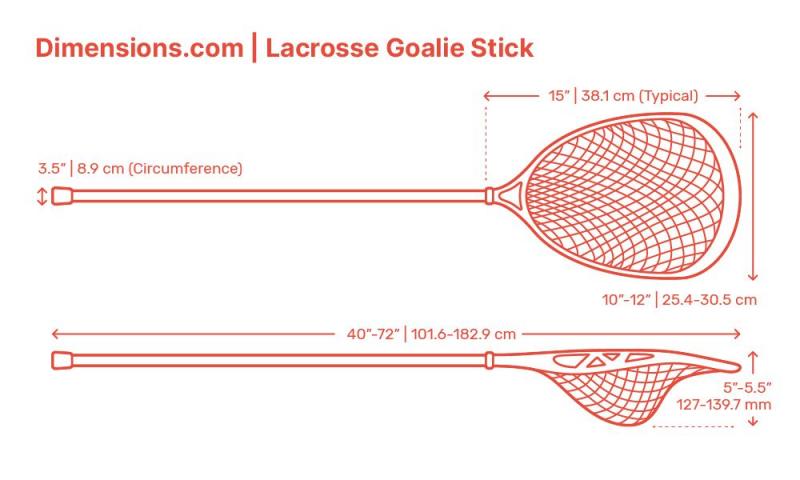
Once you have the basic toss and catch down, start pushing your limits by throwing the ball higher. As the ball goes up, acceleration due to gravity increases, so the speed coming down intensifies. This forces you to perfect your timing and technique.
Don’t try to max out your height all at once. Increase it progressively so your skills can steadily improve in tandem. An incremental challenge allows your hand-eye coordination and reflexes to adapt without getting overwhelmed. But do push yourself to go higher than feels comfortable. That’s where growth happens.
Master the Flip: Work on quickly flipping the head over to catch the ball
The crux of the brine clutch rise is the rapid head flip required to get the pocket in position to catch the ball. Break the movement down into two phases. First, aggressively point the head down by sharply rolling your top wrist forward. Second, whip the head upright by snapping your bottom wrist back.
Isolating these movements and slowly building speed is key. As you flip faster, pay attention to properly aligning the pocket to receive the ball. An angled or mistimed catch will spray the ball out. When your flip is quick and pocket placement precise, you’re ready to incorporate it into the trick.
Time It Right: Release the ball at the right moment for a smooth catch
Releasing the ball at precisely the right instant is critical for a clean brine clutch rise. If you throw too early, the ball will hit the ground before you complete the head flip. Too late and it will crash directly into the side of the stick on its way down.
The optimal release is right as you initiate the downward motion of the flip. This synchronization allows the head to complete its rotation, aligning the pocket for a smooth reception of the ball. The nuanced timing comes with focused practice. Go slowly until the sequence clicks.
Accelerate the Head: Whip the head for more ball speed on catches
As your brine clutch rise skills improve, increase the velocity you whip the head on catches. This enables you to snag faster moving balls out of the air, setting up more impressive reps. Generate speed using the same wrist snap motion, just accelerated and with greater force.
Move your entire body into the motion, not just the arms. Rotation of the core and stepping forward with the lead foot adds power. Soon you’ll be able to stick catches of balls thrown 20 feet high or more. But work up gradually to avoid injury from poor mechanics.
Step It Up: Move while executing the clutch rise for added challenge

Stationary clutch rise reps get boring quickly. Spice things up and improve your skills simultaneously by doing the trick while moving. As you get comfortable with the sequence, walk slowly forward while executing it. Focus on maintaining clean catches as you incorporate motion.
Gradually pick up speed, incorporate direction changes, add in recovery scoops. Creative movement variations prevent the drill from getting stale. More importantly, they force you to perform the clutch rise with precision from diverse body positions and in irregular patterns.
Change Planes: Practice throwing side to side and in different arcs
Another way to add challenge and interest to clutch rise reps is to change the angle and path of the ball. While it’s easiest to throw straight up, work on angling tosses to both sides. This improves coordination by forcing you to shift your body position before catching.
Vary the trajectory as well – try lower arcing tosses or rainbow lobs. Unpredictable release points make sticky catches more difficult. Work both standard and unorthodox angles into your clutch rise training for complete mastery.
Work Both Hands: Become proficient catching with your dominant and weak hand
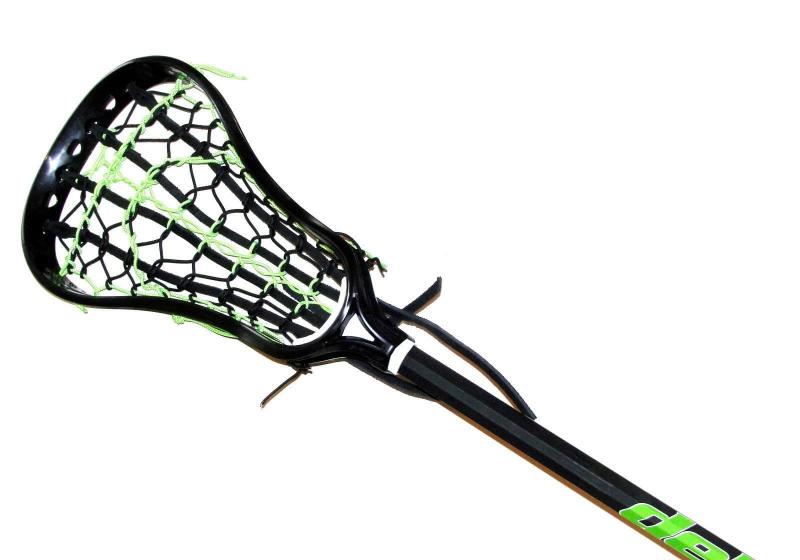
Most players learn the brine clutch rise with their dominant stick side first. But don’t neglect your off hand. Developing ambidextrous trick stick skills improves coordination and opens up creative combo potential.
Start once again with low, easy tosses to build confidence with your weak hand. The movements will feel awkward initially. But with focused repetition, your off hand clutch rise skills will catch up. Then work on smoothly incorporating both sides into combination trick moves.
Vary Releases: Toss the ball in different ways to keep it unpredictable
For increased challenge, use alternate release methods instead of basic upward tosses. Experiment with sidearm throws, overhand heaves, underhand lobs, and behind-the-back flips. Varying release points keeps catches unexpected.
You can even try clutch rise reps catching balls thrown by a partner or rebounding shots off a wall. Mixing in erratic, unfamiliar throws tests reaction time and hand-eye coordination. Keeping things unpredictable prevents complacency.
Increase Reps: Do multiple clutch rise repetitions continuously to build muscle memory
Stringing together successive clutch rise reps is demanding both mentally and physically. But it accelerates skill development by honing muscle memory and concentration. See how many clean catches you can complete consecutively without a fumble.
At first, you’ll tire quickly and struggle to make more than a few. But with dedicated practice over time, your record will steadily rise. Seamlessly chaining multiple clutch rises into a flow state generates rapid improvement and satisfaction.
Refine Your Form: Watch videos to identify areas for technique improvement
It’s easy to develop bad habits when practicing tricks alone. Filming your clutch rise attempts allows you to scrutinize your form. Watch footage to spot issues like poor sequencing, angled catches, grip mistakes, etc. You’ll be amazed what imperfections are revealed.
Also study lacrosse trick shot videos to learn proper positioning and mechanics. Mimicking the movements of skilled players accelerates cleaning up your technique. Be your own harshest critic and continually refine.
Put It All Together: Once mastered, connect clutch rises into creative trick sequences

Mastering the fundamental brine clutch rise is just the beginning. This powerful trick becomes even cooler when incorporated into combination moves. Some fun sequences to try:
- Clutch rise to behind-the-back catch
- Fake one direction, clutch rise the other
- Between-the-legs toss into clutch rise
- Back to back clutch rise catches
- Scoop then clutch rise from the ground
- Add crossovers, fakes, quick sticks
The possibilities are endless for linking clutch rises into stylish trick lines. Creatively blending techniques cements mastery while impressing onlookers. Put in your 10,000 reps and the brine clutch rise will soon become second nature!
Start Low: Begin practicing close to the ground to build confidence
The Brine Clutch Rise is one of the most popular lacrosse stick tricks, but it can be intimidating for beginners. The key is to start low and build up your confidence. Find a flat, open area with soft ground and begin practicing just a few inches off the ground. As you get comfortable with the motions, gradually increase the height. Taking it slow allows you to develop proper technique and timing before trying a full rise from the waist up.
Here are 15 easy steps to help you master this amazing lacrosse stick trick:
1. Tape up the bottom of your stick
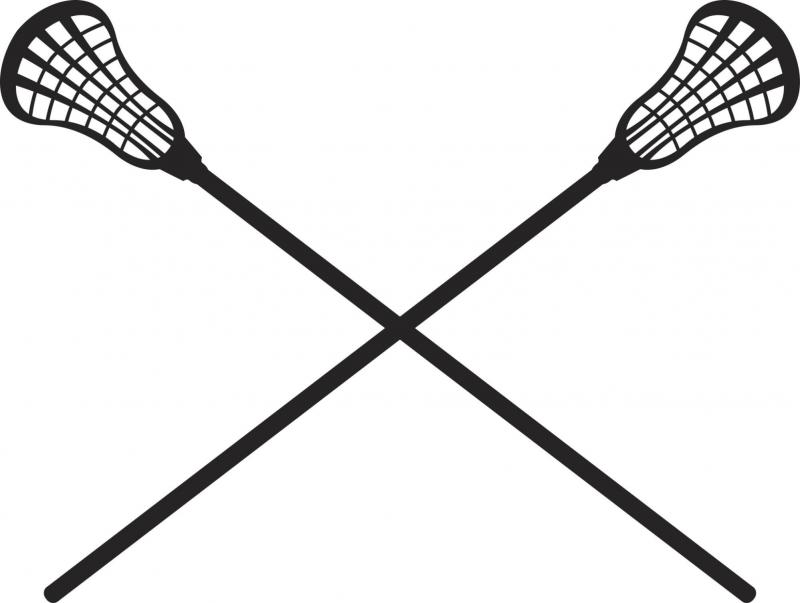
Before attempting the Clutch Rise, tape up the bottom 6 inches of your stick shaft. This protects the shaft from damage as you drop the stick to the ground. Use athletic tape or electrical tape – something that provides a decent grip. Having this tape will give you confidence to release the stick during your tosses without worrying about scuffing up your shaft.
2. Assume the starting stance
Stand with your feet about shoulder-width apart. Hold your stick vertically in front of you with both hands together at the base just above the tape. Your top hand should grip the stick normally while the bottom hand grips the shaft from underneath, with your palm facing up.
3. Initiate the upward flick
Initiate the trick by aggressively flicking the stick upward. This upward motion should come mostly from your bottom wrist and fingers while keeping the top hand relatively still. Think about it as more of a snap than a throw. Your bottom three fingers provide most of the power as they release from the shaft.
4. Let the stick rotate freely
As the stick releases upwards, let it rotate freely so the head rotates towards your body. Do not try to manipulate or guide the rotation. The natural physics of the toss will turn the stick if you initiate with a good flick.
5. Time the clutch
This is the trickiest but most important part. As the stick reaches the peak of its upward rotation, clamp your hands together to “clutch” the stick and stop the rotation. The key is timing – clutch too early and you stop the momentum, clutch too late and you won’t catch it cleanly.
6. Keep your eye on the ball
During the rise and clutch, keep your eyes focused on the ball in the pocket. Watching the ball will help you time your clutch properly so your hands meet the stick cleanly around the ball for optimal control.
7. Guide it on the way down
As the stick begins dropping back down, guide the head rotation so the pocket remains upright. Think of it as following through on your toss and clutch. Allowing a clean finish will help build consistency.
8. Absorb the impact with your knees
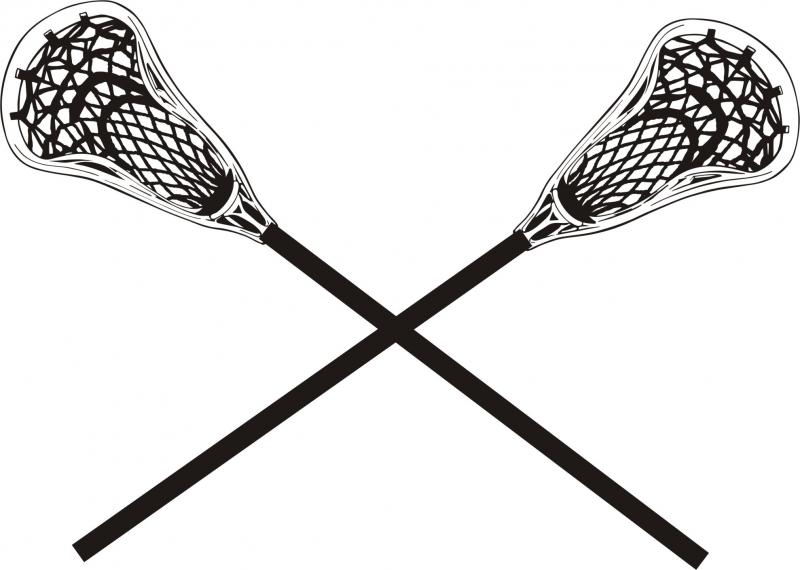
As the stick reaches the bottom, bend your knees to absorb the impact. Keep your upper body relaxed and let your legs act as shock absorbers. This protects your shoulders and back from the force of the drop.
9. Stick the landing
The final step is sticking the landing – remaining balanced and in control as the stick hits the ground. Your momentum should drop straight down rather than flipping you forward. Stay centered over the stick and keep your shoulders aligned above your hips.
10. Reset smoothly for the next rep
Upon landing, smoothly return to the starting position by bending your knees and dropping your bottom hand back under the shaft. Keep your motions fluid as you reset for the next repetition.
11. Start low and increase height
Again, it’s crucial to begin practicing from just a few inches off the ground. As the technique becomes second nature, gradually increase the toss height over multiple practice sessions. Rushing upward progression leads to poor mechanics and frustration.
12. Develop a rhythmic tempo
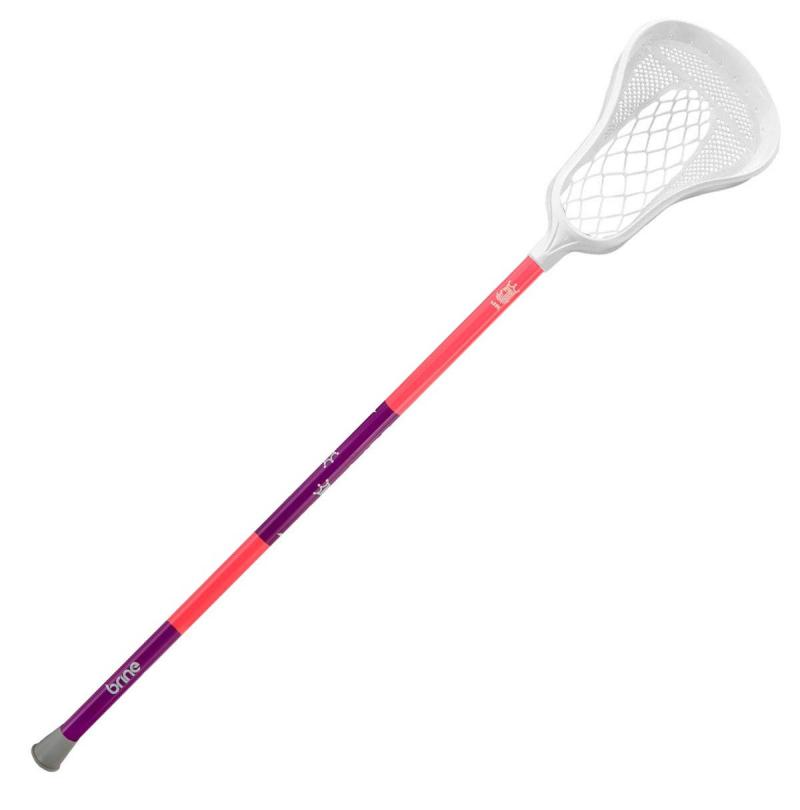
Creating a smooth, rhythmic tempo allows you to maintain control and consistency. Count a consistent cadence in your head like “1,2,3, toss, clutch, land”. Find a tempo that keeps your motions smooth.
13. Keep your shoulders and feet aligned
Focus on keeping your shoulders aligned directly over your hips, and keep your feet pointing in the same direction as your torso. This centered athletic stance prevents unwanted rotation and keeps the energy transferring cleanly upward and downward.
14. Loosen your grip during the rise
While gripping firmly at the start, consciously loosen your grip tension slightly as the stick rises upward. This reduces friction and allows the stick to rotate and “fall” back into your clutched grasp.
15. Stick the clutch point
As you become more consistent, pay attention to the ideal clutch “sweet spot” and stick it every time. Clutching at the exact right mid-point of the rotation is what makes the trick look and feel effortless.
Mastering the Brine Clutch Rise requires precision timing and a delicate touch, but these 15 steps will help you learn the technique correctly. Focus on quality reps starting low to the ground, and gradually build up height. With regular practice, you’ll impress your teammates and dominate the highlight reel in no time.
Get a Feel for the Ball: Toss and catch to develop handling skills
The Brine Clutch Rise may look cool, but you need solid fundamentals before attempting this advanced lacrosse stick trick. Start by getting comfortable with basic tossing and catching. Developing smooth ball handling skills gives you the foundation to take on new challenges.
Follow these 15 easy steps to master the iconic Brine Clutch Rise:
1. Practice your grip
Wrap your dominant hand typically around the shaft near the throat of the head. Place your other hand gently on the side of the ball in the pocket. Having proper hand placement gives you optimal control for clean catches.
2. Toss the ball up and catch it
Focus on smooth, controlled tosses about waist high. As the ball comes down, give with your hands to cushion the catch. Move the stick in a slight circular motion as you receive the ball to steady it in the pocket.
3. Increase the toss height
As your skills improve, gradually toss the ball higher to improve reaction time. Continue following through on each catch to quickly stabilize the ball for the next throw.
4. Switch hands periodically
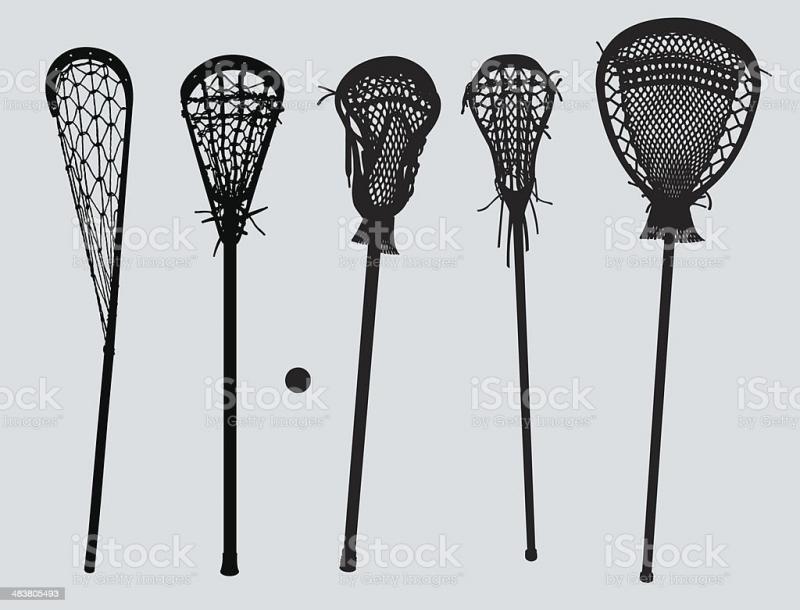
To advance your coordination, switch periodically which hand you use up top to toss and catch. Your bottom hand remains gently on the ball. Developing dexterity in both hands makes tricks easier.
5. Practice catching on the run
Add movement by taking a few steps forward or back as you catch tosses. Shifting your body weight challenges your focus and reflexes. Keep the stick motions smooth as you move.
6. Vary your release point
Instead of central tosses, try releasing the ball slightly right, left, behind, or in front of your head. Chasing tosses in different directions enhances your quickness reacting to errant passes during games.
7. Toss sidearm for variety
Sidearm tosses introduce a sideways rotation on the ball. Adjust your catch position so the pocket absorbs this spin for a clean reception. Sidearm passing is common in lacrosse games.
8. Practice tricky behind-the-back catches
Test your hand-eye coordination by attempting to catch tosses behind your back. Watch the ball over your shoulder as you swing the stick blindly backwards to make the grab. This is an advanced technique!
9. Partner up for two-person drills
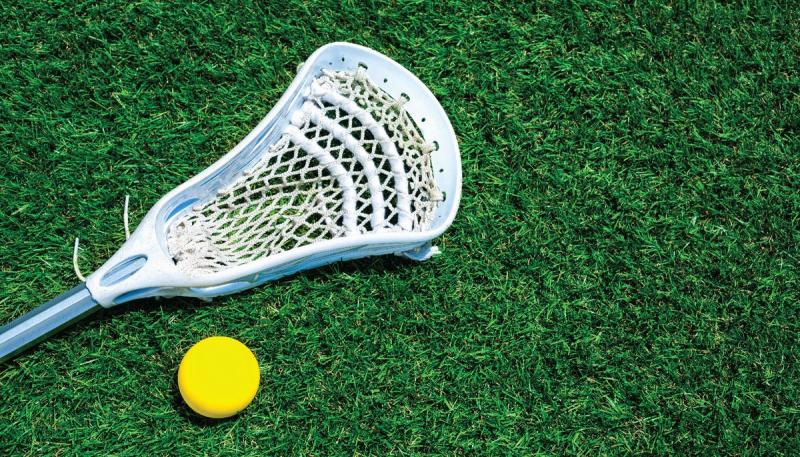
Have a teammate or friend gently toss you passes at varying heights and speeds. Get used to adjusting your moves to handle unpredictable throws. Switch roles so you both develop technical skills.
10. Keep your eyes on the ball
Focused vision and concentration are critical for clean catches. Watch each toss all the way from release to reception. Tracking the ball improves timing and technique.
11. Get a feel for cradling
Cradle the ball fluidly after catches to maintain possession on the run. Make sideways S motions with the stick head to cradle the ball smoothly. Fluent cradling is essential for advancing.
12. Play catch every chance you get
Frequent repetitions are key for honing your handling abilities. Spend time whenever possible tossing the ball around. The more you practice fundamentals, the quicker you’ll progress.
13. Don’t grip the stick too tightly
Use a light but secure grip during play. Overtightening tenses your movements. Hold the stick just firmly enough to maintain control. Finding this grip “sweet spot” comes with time.
14. Have fun!
Tossing a ball around with friends is enjoyable. Don’t put too much pressure on yourself as a beginner. Allow yourself to take pleasure in improving bit by bit.
15. Patience pays off
Smooth handling requires patience and persistence. Stick with basic drills before moving onto advanced tricks. Mastering the fundamentals first gives you the tools to excel at flashier stick tricks like the Brine Clutch Rise.
Polishing your basic tossing, catching and cradling abilities establishes a platform for conquering new challenges. Follow these tips to become an all-around better ball handler. Once you’ve developed technical skills through repetition, you’ll be ready to impress teammates with your Clutch Rise abilities.
Add Movement: Walk while tossing and catching to improve coordination
Lacrosse stick tricks can be intimidating for beginners. But with practice and perseverance, even novice players can master advanced techniques like the Brine Clutch Rise. This trick looks incredibly slick when executed properly, with the ball appearing to float up the pocket. Here’s a step-by-step guide to help you learn the Brine Clutch Rise in 15 easy steps.
Start by getting comfortable with the fundamentals. Before diving into flashy stick tricks, it’s important to nail down proper catching and throwing technique. Spend time practicing basic catches, working on securing the ball cleanly in the pocket every time. Once you feel confident casually tossing and catching, add some movement into the mix. Try walking around while continuously throwing and catching – this helps improve hand-eye coordination and stick comfort.
Now you’re ready to begin training on the Brine Clutch Rise specifically. This trick starts with a standard catch in the mid-to-upper pocket region. As the ball is secured in the head, swiftly jerk the head upwards and backwards. This pulling motion will cause the ball to “rise” up the head. The key is keeping the ball cradled in the pocket even as you quickly reposition the stick.
When first attempting the Brine Clutch Rise, go slowly. Exaggerate the upward jerking movement to get a feel for the proper technique. Repeatedly toss the ball in the air, catch it in your stick, then work on the rising motion. Expect some dropped balls and fumbled catches – this is perfectly normal as you develop the coordination and timing.
As you gain confidence, try speeding up the action. The ball should float almost magically up the pocket when done correctly. Now add the dismount: as the ball reaches the top of the head, give your wrist a flick to release the ball back into the air. This completes the full Brine Clutch Rise sequence. Repeat it over and over until it feels smooth.
To take the trick to the next level, work on doing it while in motion. Practice walking or even jogging around as you execute the Brine Clutch Rise. This requires concentrating on the stick mechanics while simultaneously focusing on your body movement. It may feel overwhelmingly difficult at first. Go slow and don’t get discouraged – with regular practice, it will click.
Stringing your stick properly is key for lacrosse stick tricks. For the Brine Clutch Rise, use a mid-to-high pocket depth. This gives space for the ball to “rise” up the head when you jerk it upwards. The pocket should also be moderately tight so the ball stays controlled during the fast motion. You may need to restring your stick to optimize it for tricks like this.
Once you’ve mastered the basic Brine Clutch Rise, you can build on it with more advanced variations. Try doing two or even three repetitions in a row without letting go of the ball. This continuous rising and dismounting looks incredibly slick. Or for added flair, throw in a wrist twist while performing the trick.
Experiment with where you initiate the catch – start lower in the pocket, or even down by the scoop. This changes the arc and visual effect of the rising motion. You can also play around with the velocity and angle of the dismount toss to send the ball in different directions.
Learning the Brine Clutch Rise takes commitment and tons of repetition, but it’s incredibly rewarding when it finally clicks. Don’t be afraid to go slow and focus on mechanics. Before you know it, you’ll be able to bust out this jaw-dropping trick to dazzle teammates and opponents.
Here are some final tips to help master the Brine Clutch Rise:
- Use an athletic cradle motion to initiate the “rise”
- Keep your top hand loose but firm when jerking the stick
- Look towards the sky as you jerk the stick upward
- Point the stick tip towards the ground on the dismount
- Practice in your backyard every day for at least 15 minutes
With dedication and persistence, the flashy Brine Clutch Rise can become a go-to weapon in your lacrosse stick trick arsenal. The fluid rising motion is sure to impress both on the field and on the blacktop. So grab your best short stick, find an open space, and get to work mastering this iconic trick!
Go for Height: Gradually increase the height of your throws and catches
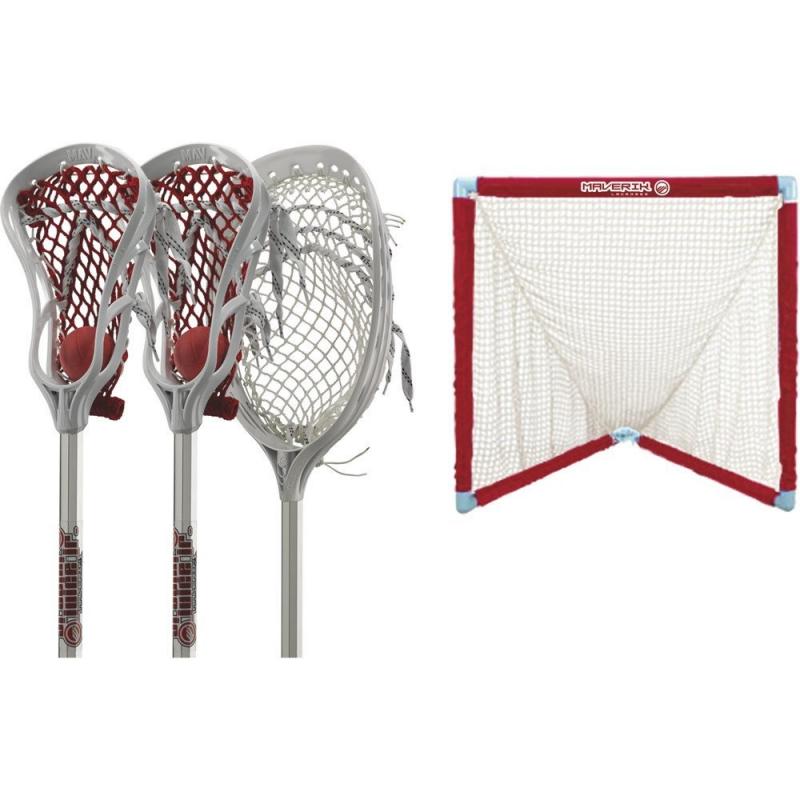
Lacrosse stick tricks like the Brine Clutch take time and practice to master. But with dedication and by gradually increasing the height of your throws and catches, you can develop the skills needed to impress your teammates and opponents.
When first learning the Brine Clutch rise, start with low throws and catches. Begin by gently tossing the ball straight up into the air about a foot above the head of your lacrosse stick. As the ball comes back down, position the head of the stick under the ball and let it settle into the pocket. Catching the ball even just a foot above your stick is an important first step.
Once you feel comfortable with low throws and catches, start increasing the height little by little. Throw the ball up 2 feet, then 3 feet, then 4 feet and higher. Move at your own pace and focus on maintaining control. Don’t rush to throw super high before you have the lower heights dialed in.
As you gain confidence, you can begin putting a little force behind your throws to give the ball some vertical lift. But don’t whip the stick too aggressively or you’ll risk losing control. Smooth, steady throws are key.
With each new height, pay close attention to the tipping point where the ball begins to fall back down. This is your cue to get the head of the stick positioned underneath. Finding this rhythm is an essential skill for bringing the ball securely into your pocket.
Having a friend toss the ball to you can also help in the early stages. Focus on tracking the ball into your stick and absorbing its impact to gain experience catching from various heights.
Once you can consistently catch the ball up to about shoulder height, you’ll be ready to move onto the next steps of mastering the clutch rise trick.
Get the Right Grip

Proper hand placement is crucial for controlling the lacrosse stick during the Brine Clutch rise. Be sure to grip the stick down low on the shaft near the bottom. This gives you much better leverage and whip for generating spin on the ball.
With your dominant hand on bottom, wrap your top hand a few inches above it. Keep a loose but firm grip throughout the trick, being careful not to choke up too much.
You’ll also want to tilt the head of the stick slightly up towards the sky before initiating the rise. This puts the pocket in better catching position and helps ensure the ball goes straight up rather than flying backward.
Master the Wrist Snap
Executing a clean wrist snap is integral for giving the ball maximum vertical lift on your rise attempts. As you throw the ball upward, snap your wrist aggressively to generate force.
The timing of the snap is critical – it should occur right as you release the ball from the pocket. Too early and you’ll lose control. Too late and you won’t get enough lift.
Practice the wrist snap motion on its own without a ball to get the feel. Go slowly at first until you build more coordination and speed.
You can also try bouncing a ball straight up and down in your pocket, snapping the wrist on each repetitive throw. This engrains the proper motion.
As you incorporate the wrist snap into full rise attempts, experiment with different angles – straight overhead, angled slightly backward etc. Find what works best for your style.
Put Extra Spin on the Ball
For maximum height on your Brine Clutch attempts, you need to put substantial backspin on the ball as you throw it skyward. This adds gyroscopic lift and helps the ball float longer at its peak.
As your wrist snaps forward generating the throw, roll your thumb over the side of the stick head. This pumps extra revolutions into the ball release.
You can hear and even slightly see the rotations if you spin the ball well. The more spin, the better lift and hang time you’ll get on each rise.
Practice isolating the spin motion by throwing the ball straight down into the ground with an exaggerated wrist roll. Then work it back into your full rise throws.
Focusing on putting reverse rotations on the ball should help take your Brine Clutch skills to new heights.
Stick the Landing
Catching the ball securely as it drops back down is arguably the most challenging part of mastering the clutch rise. As the ball reaches its peak and starts falling, you’ll need to re-position the pocket directly underneath.
The key is keeping your eye on the ball throughout its entire flight. Watch it closely as it goes up and track its trajectory downwards. This allows you to time the catch correctly.
Don’t take your eyes off the ball even for a split second when learning this trick. Follow it up and down with your gaze to build the hand-eye coordination needed to stick the catch.
You’ll also need to maneuver the stick head smoothly into place below the descending ball. Avoid jerky, abrupt movements that could misdirect the catch.
Catching the ball cleanly on its way down takes lots of repetition. But with continual practice, you’ll cement the ability to snag it reliably every time.
Put It All Together
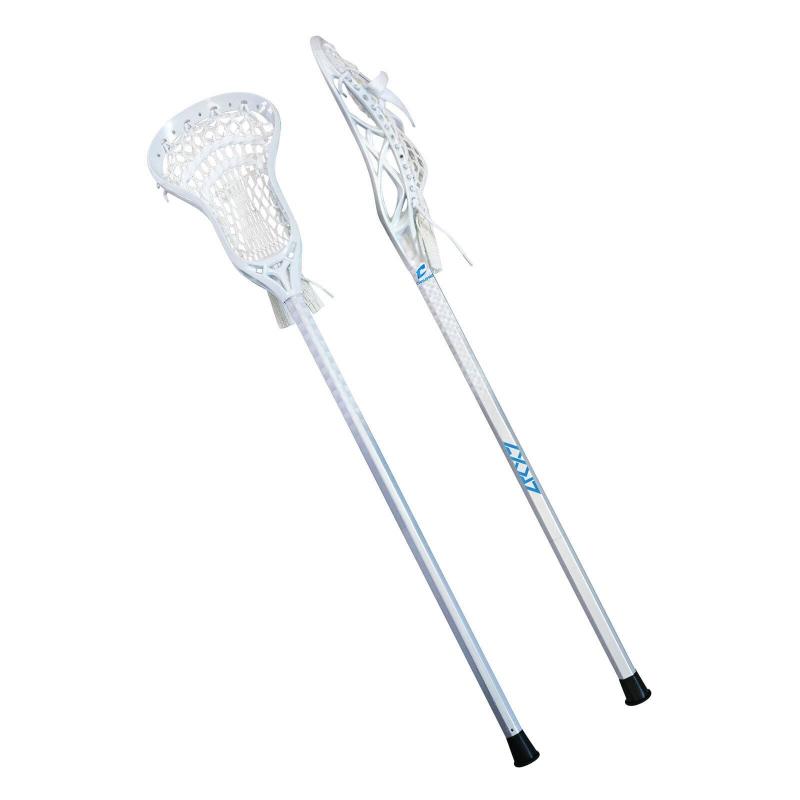
Once you’ve honed the individual elements of the Brine Clutch – the throw, spin, and catch – start stringing them together into one fluid motion. The key is smoothly flowing from one phase to the next.
Build up your overall coordination until you don’t have to think consciously about each piece of the trick. It should become instinctual with enough practice.
Most importantly, have fun with it! Don’t get frustrated trying to learn advanced lacrosse stick tricks overnight. Stick with the process and growth will come. Not to mention the huge payoff of styling on your teammates after mastering the clutch rise.
With the right grip, wrist snap, spin, and catch technique, you’ll be launching the ball 10+ feet in the air in no time. Just take it step by step and gradually increase your throws. Before you know it, pulling off the Brine Clutch rise will be like second nature.
Master the Flip: Work on quickly flipping the head over to catch the ball
Performing slick lacrosse stick tricks like the Brine Clutch requires not just throwing skills, but also quickly maneuvering the head to catch the ball. Mastering the mid-air flip of the stick head takes work, but is vital for clutching the ball out of the sky.
Start practicing the flipping motion without a ball. Hold the stick vertically with the scooped side facing out and flip the head over 180 degrees. The motion should be smooth and controlled.
Go slowly at first, focusing on the wrist movement needed to whip the head around. Gain speed and fluidity with repetition. You want it to feel natural and effortless.
Also try flipping the stick held horizontally like you’re cradling a ball. Again, concentrate on loose, fluid motions without jerking the stick.
Once the basic flip feels comfortable, start integrating it into catches. Lightly toss a ball in the air and work on flipping the head over to snatch the ball as it drops down.
Gradually increase the height of the tosses as your coordination improves. But stay in control – don’t rush the progression before you’re ready.
Having a friend gently lob balls to you can also help drill the technique. Focus on tracking the ball while smoothly maneuvering the head into position underneath.
When flipping to catch during a Brine Clutch attempt, the key is timing. Initiate the flip right as the ball reaches its peak and starts descending. Too early and you’ll misdirect the catch.
Work on getting a feel for when to trigger the flip during a live Clutch rise. The split second when the ball transitions upward to downward is your cue to stick the landing.
Lead with the Head
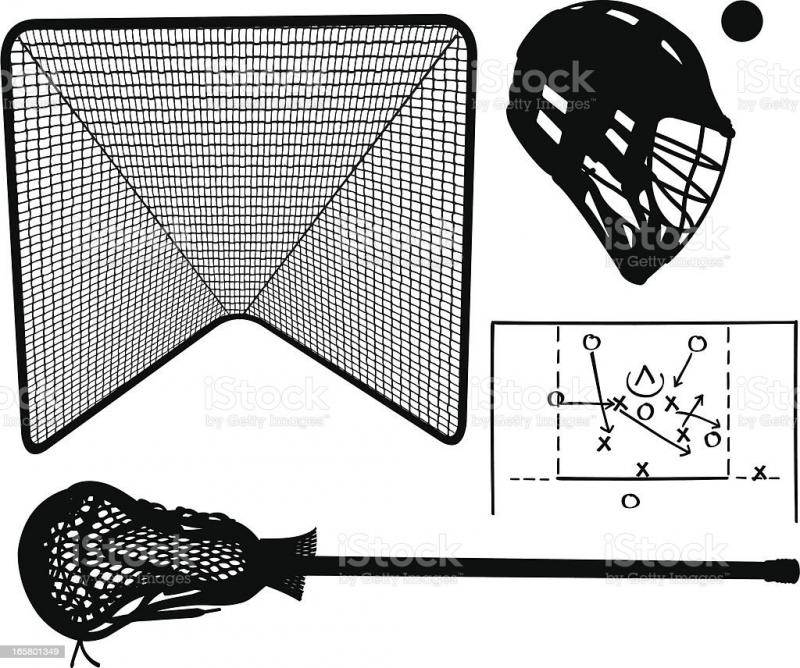
For optimal control when flipping the stick head, lead the motion with the head itself rather than the shaft. This prevents over-rotation and allows you to catch the ball cleanly.
As you flip, consciously think about whipping the scooped side of the head around first. Let the shaft follow in response.
The head should rotate fully 180 degrees during the trick while the shaft moves more subtly. Keeping the head whip in charge results in tighter, more accurate flips.
You can practice this by underhand tossing a ball, flipping the head over, and catching the ball in the backside of the pocket. Work on sticking the catch right in the sweet spot.
Keep Your Eyes Up
Resist the urge to look down at the stick when trying to catch a Brine Clutch rise. Keeping your eyes peeled on the ball is critical for timing the flip properly.
The moment you take your eye off the ball mid-flight, you lose the ability to track its trajectory and cue the flip effectively.
Follow the ball from the second it leaves the pocket on the rise all the way until it lands back in the pocket after the flip. Don’t lose focus for even a split second.
Having a friend mix in some fake catches where they call your name or do other distracting behaviors can help drill this skill. Keep the eyes locked on the prize through any disruption.
Whip from Multiple Angles
For the most control when flipping the stick head, you need to be able to execute the whip motion from different angles and body positions.
Practice initiating the flip from both sides of your body – your right and left hip areas. This allows you to adjust on the fly during a rise and catch.
Also try flipping the head from behind your back. Reach the stick arm back and whip the head over your shoulder to the front. Having this skill in your back pocket can lead to cool catch variations.
Don’t get too comfortable always flipping from the same spot. Vary your release points to make the catch more natural and reflexive from any position.
Cushion the Catch
When attempting to catch a Brine Clutch rise, don’t just flip the head rigidly into a fixed position. Give a little cushion by letting the head float back slightly as the ball drops.
This helps absorb the impact as the ball lands, leading to more secure catches. If you flip to an exact stationary position, the ball will bounce out more easily.
Time the flip so your stick head is at its destination a split second before the ball arrives. Let it give slightly on impact.
Practice exaggerating the cushion motion by flipping early and letting the head recoil back. Then dial it into real rise attempts for flawless catches.
Put It All Together
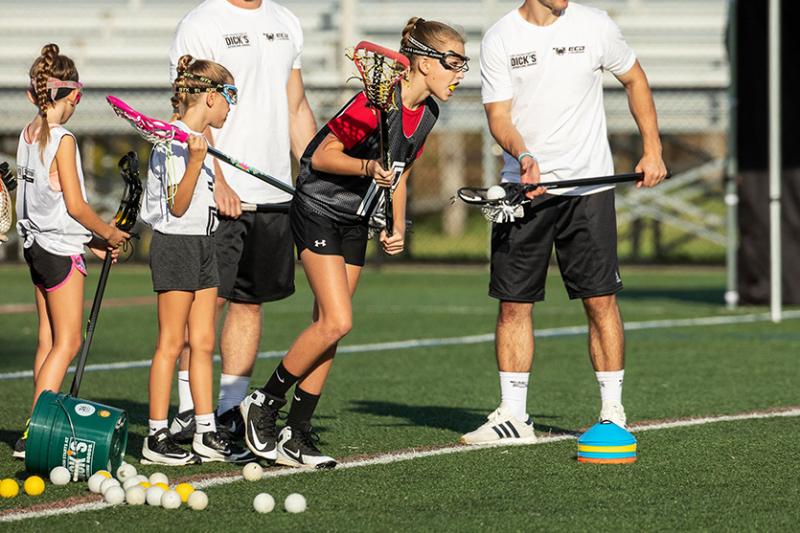
With enough repetition flipping and catching from all angles, the motion will become instinctual. You won’t have to think about it consciously during a rise attempt.
Strive for fluidity in your catches. The full technique – throw, track, flip, cushion, catch – should flow as one natural sequence.
Don’t get frustrated if it takes time to stick all the pieces together. Smoothly catching a Brine Clutch is an advanced skill requiring patience and persistence.
The more balls you have to practice with, the faster your skills will develop. So grab a few friends and get flipping! Consistent practice is the key to pulling off buttery clutch catches.
With sound technique and some swagger, you’ll be snagging clutch rises way over your head in no time. Then it’s just a matter of stringing together combos to put the hurt on your defenders.
Time It Right: Release the ball at the right moment for a smooth catch
A key part of consistently nailing the Brine Clutch lacrosse trick is timing the release of the ball perfectly on the initial throw. Releasing too early or late will result in messy catches and failed attempts.
Start off by paying close attention to the exact moment the ball leaves the pocket on your throws. Go slowly and consciously focus on the release timing.
Gradually start to build muscle memory for letting the ball go at the right point in your throwing motion. It should smoothly transfer to the release point on your stick.
Having a friend watch and give feedback can help dial in the timing. Don’t be afraid to start slow and methodical in order to ingrain proper technique.
Use Your Wrist as a Guide
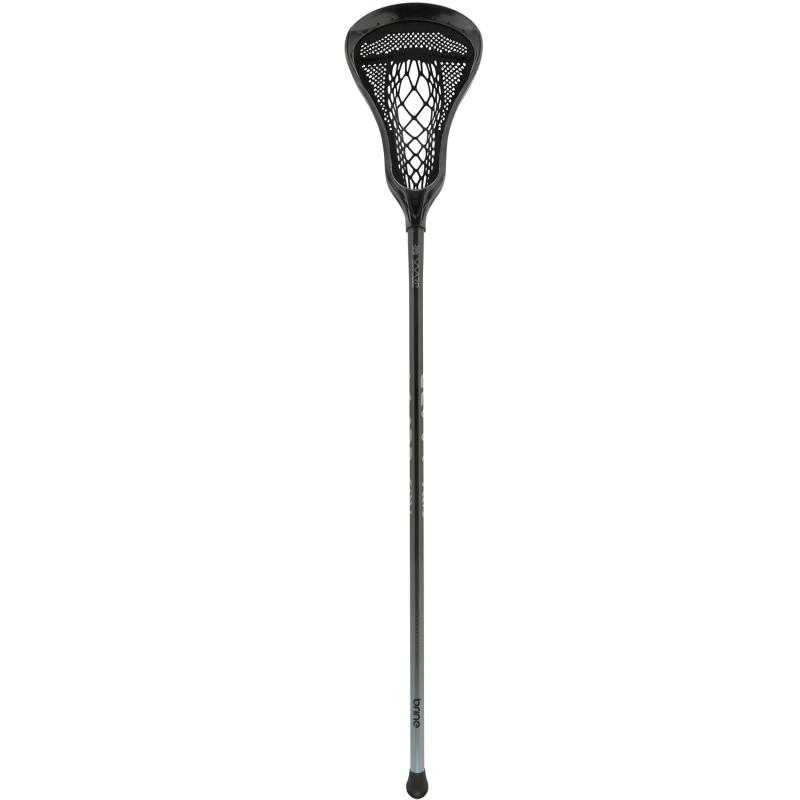
Your wrist motion is the best cue for nailing the proper ball release on a clutch rise attempt. As your wrist snaps forward, that signals letting the ball go.
Pay close attention to the angle of your wrist in the throwing motion. As it approaches full snap extension, the ball should simultaneously come out of the pocket.
Starting with your wrist cocked back, concentrate on uncoiling it rapidly to generate whip. If you feel the ball exit the pocket as your wrist snaps straight, your timing is on point.
Isolate wrist snap practice can help develop this key timing skill. Go through the motion slowly without a ball first to get the feel.
Release from the Sweet Spot
Always initiate the ball release from the optimal point in the pocket – the mid-upper sweet spot. This area gives you maximum control and spin.
Be conscious about seating the ball deep in the pocket on each attempt rather than cradling it loosely near the scoop.
Quickly snapping from a anchored sweet spot generates more force and lift on your throws. Releases from shallow pockets tend to be weaker.
Practice pinpointing the sweet spot and snapping from there. You’ll soon gain a feel for launching from the prime point of leverage and power.
Keep Your Eyes Downfield
Resist glancing upward before the throw is fully executed when attempting a Brine Clutch. Keep your vision locked on the release point to stay on time.
The moment you look skyward anticipating the catch, you lose connection with the throw timing and risk mistimed releases.
Force yourself to keep your eyes downfield on the stick head as you throw. Let your throwing motion run on instinct without peeking.
Once the ball is clearly out of the pocket, then you can track its flight path upward and begin preparing for the catch.
Follow Through Fully
Completing a full throwing follow-through is key for keeping your release timing tight and avoiding hitches.
Don’t cut your throwing motion off early even after you feel the ball exit the pocket. Drive fully through the release point.
Following through keeps your mechanics and tempo smooth. It reduces overthinking and helps build solid muscle memory.
Concentrate on holding your form and completing the entire motion before transitioning to the catch portion of the trick.
Put It All Together
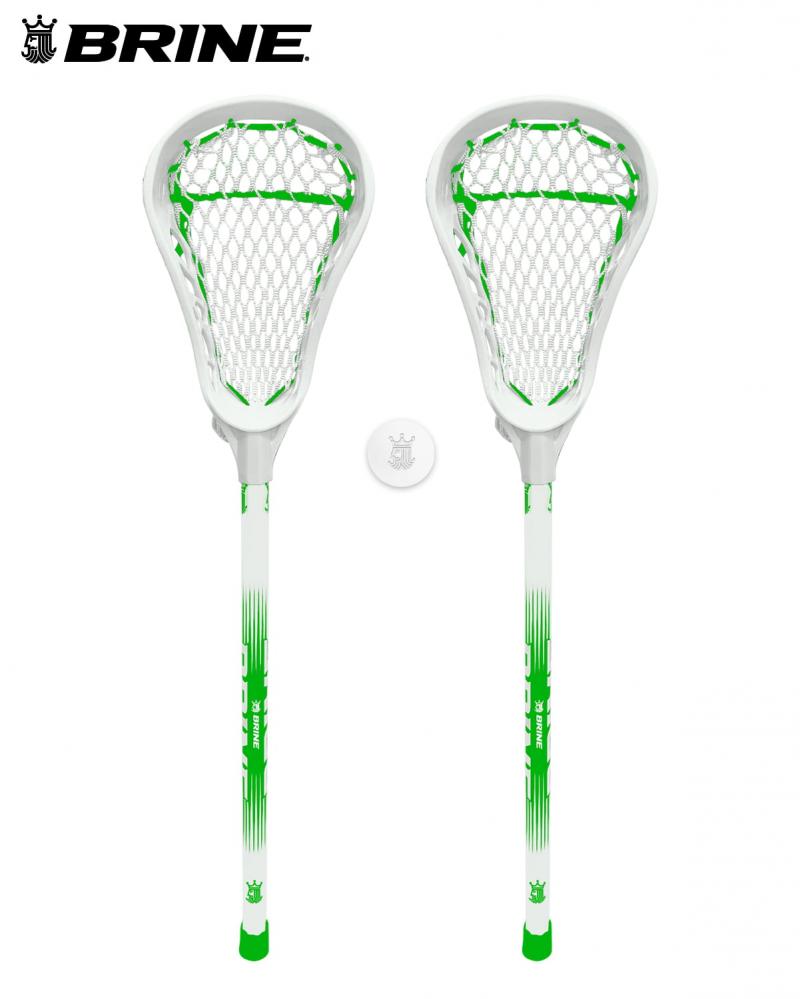
With repetition, you’ll gain instincts for the perfect release timing and delivery on Brine Clutch attempts. It will become second nature.
Strive to make the full throwing sequence – load, plant, rotate, release, follow through – feel seamless and uninterrupted.
Smoothly chaining together the steps will result in consistent rises and greater trick mastery. Don’t get frustrated early on if your timing feels off.
Gradually piecing together the skills with precision and discipline will win out. Soon you’ll be clutch rising like a pro thanks to perfectly timed throws.
So grab your stick and develop a feel for those rhythmic releases. Dial it in one rep at a time. Before long defenders will be dazzled by your prowess and impeccable Brine Clutch technique.
Accelerate the Head: Whip the head for more ball speed on catches
Catching a Brine Clutch lacrosse rise often requires quickly accelerating the stick head to match the ball speed for a clean catch. Whipping the head into motion generates momentum to snag a fast-dropping ball.
Practice accelerating the head by starting from a stationary position and violently whipping the stick through the air. Focus on building speed rapidly after you initiate the movement.
Gradually work on controlling the acceleration into more precise head positions. Use cones or other targets to whip toward.
Having a friend gently toss tennis balls at you from close range can also help train quick head acceleration for catches. React and accelerate to snatch each toss.
Lead with Your Bottom Hand
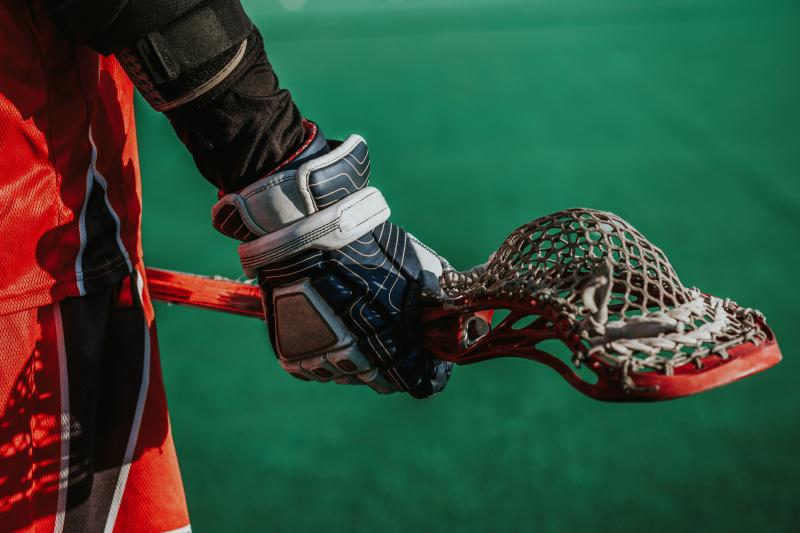
For optimal head acceleration, lead the motion with your bottom hand during a Brine Clutch catch attempt.
Keeping the bottom hand anchored while violently whipping with your guide hand up top generates leverage and speed.
Consciously think about ripping through with that lead bottom hand on each acceleration. It should stay put while the top hand flies.
Isolate the bottom hand whipping motion without a stick first. Then combine back into your full catches for maximized head speed.
Use Your Torso Rotation
Don’t just rely on your arms to accelerate the stick head. Utilize an aggressive torso rotation to recruit your core power.
As you whip the stick forward, simultaneously rotate your shoulders and hips to gain momentum. Uncoil violently into the catch.
The more you engage your core to unleash on each acceleration, the more force you’ll be able to generate with practice.
Concentrate on drawing full rotation power from your lower body up through your core for maximum head speed.
Follow Through on Catches
Don’t chop off your acceleration after making contact with the ball on a clutch catch. Follow through for added control.
Allow the head to continue whipping forward after the catch rather than stopping abruptly. This helps absorb the ball impact.
Think about carrying the momentum fully through the catch motion rather than cutting it off prematurely.
Driving through contact with the ball helps stick the catch and gives you a smooth transition into the next trick sequence.
Work on Redirects
To take your acceleration skills up a notch, practice whipping the head to sharply change direction and catch balls.
Have a friend toss tennis balls from alternating sides and work on accelerating the head from one side to the other to make catches.
Sharply changing the acceleration direction trains reaction time and body coordination. It prepares you for in-game trick catches from all angles.
Stay low and grounded during the redirects. Making rapid multi-directional catches will soon feel fluid.
Put It All Together
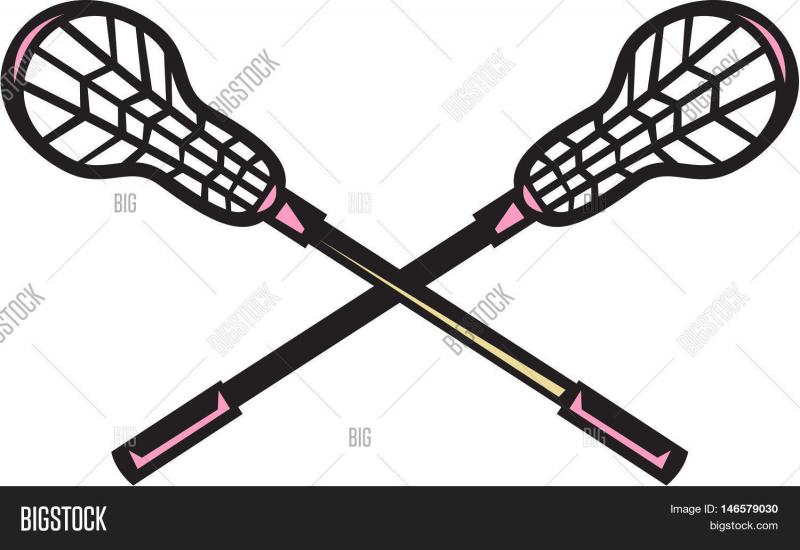
As you piece together the acceleration techniques – lead hand, torso rotation, follow through – catching even rockets out of the air will start to feel natural.
Strive to smoothly flow from your clutch rise throw to accelerating into the catch position in one motion.
Don’t overthink the acceleration. With enough quality reps, it will become instinctual.
Before you know it, aggressively whipping the head will allow you to snag clutch rises other players can only dream of. Defenders will be mystified by your quickness and control.
So grab your stick and harness that acceleration power. Unleash it on the field and leave opponents in your dust!
Step It Up: Move while executing the clutch rise for added challenge
Once you become comfortable performing the Brine Clutch trick stationary, try adding movement to take your skills up a notch. Executing clutch rises while on the run tests reaction time and body coordination.
Start by just walking slowly while attempting the trick. Concentrate on keeping your throwing and catching mechanics tight as you move.
Gradually build up to faster movements like jogging, sprinting, and change of direction. The key is controlling all phases of the trick while in motion.
Have a friend call out movement commands or pass balls to lead you in different directions. React by pulling off smooth clutch sequences on the fly.
Ground Your Lower Body
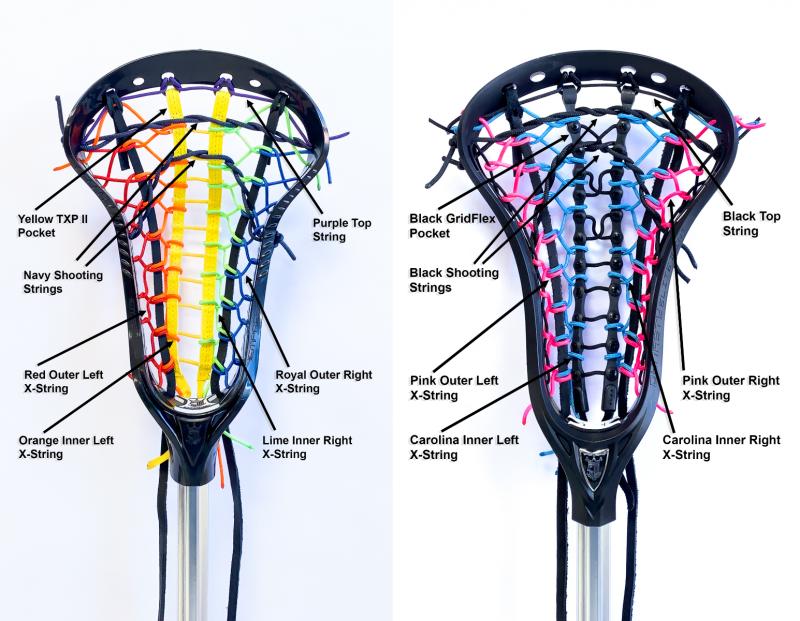
Executing lacrosse stick tricks on the move requires a strong, athletic base. Focus on grounding your lower body while in motion.
Concentrate on driving your legs powerfully with each step to remain balanced. Avoid an upper-body or top-heavy approach.
Bend your knees to stay centered over your feet. Find your rhythm smoothly transitioning from step to step.
The more stability and force you generate from the ground up, the better control you’ll have tricking on the run.
Follow Through on Throws
Neglecting your throwing follow-through can throw off your release timing and accuracy when moving. Fully complete each throw.
Don’t cut the motion short even as you transition steps. Drive fully through the release point with aggression.
Following through on throws while on the move keeps your mechanics tight and helps build a smooth tempo.
Maintain your focus all the way until the ball leaves your pocket then immediately cue the footwork transition.
Keep Your Head Up
Resist the urge to look down at the ball or your stick when clutch rising on the move. Keep your eyes and head up.
Dropping your head makes it nearly impossible to maintain body control. You lose awareness of your footwork and surroundings.
Eyes up allows you to track the ball while also cueing your body motion. It’s a vital skill for slick coordination.
Have a friend remind you to keep your head up if it starts dangling. Staying alert facilitates smooth trick execution.
Practice Cuts and Jukes
Sharply changing direction while clutch rising trains reaction time and challenges coordination.
Practice jab steps, jump cuts, pivots and other rapid moves. Focus on maintaining control through the trick during quick changes.
Make the cuts and directional changes randomly on your own or have a friend yell them out to increase unpredictability.
The more agile and adaptable you become, the better your in-game trick ability will be.
Put It All Together

With dedicated work, clutch rising while moving at game speed will start to feel natural. The mechanics will click.
Stick to the basics early in your development – stationary before moving, walking before running, etc.
Don’t rush into overly difficult trick attempts on the move before you have solid fundamentals. Building gradually prevents frustration.
Most importantly, embrace the challenge of adding motion. Rising to the occasion accelerates your mastery and takes skills to the next level.
So grab your stick and get moving! Incorporate footwork and motion into your clutch rise training. The added difficulty will pay big dividends in impressing fans and intimidating defenders.
Change Planes: Practice throwing side to side and in different arcs
Taking your Brine Clutch skills to the next level requires being able to throw and catch the ball on multiple planes. Varying the throw angles tests reaction time and expands possibilities.
Start by simply changing the angle of your rise from directly overhead to slightly backwards. Pay attention to how the catch changes.
Gradually work in more extreme side-to-side angles, first across your body, then further outside your frame with full extension.
Exaggerate the different planes by trying behind-the-back rises. This builds arm strength and shoulder coordination at extreme angles.
Lead with Your Head and Eyes

When throwing side to side, consciously keep your head and eyes facing forward downfield rather than turning toward the ball.
Let your arm and stick do the work of finding the release points from different angles without rotating your core and eyes.
This keeps you oriented to your defender and takes the trick mechanics to a more instinctual level.
Only once the ball is released can you turn your head to track its path. Trust your arm from multiple release points.
Roll Your Shoulders
Generating power from unorthodox angles requires aggressively rolling your shoulders into throws.
As you wind up and release across your body, make a conscious effort to rotate through your upper back.
Rolling through the shoulders recruits more core power and prevents trying to muscle throws strictly with your arms.
Feel the sequence of shoulder turns from windup to release. Smooth rolls equal smooth catches.
Adjust Your Grip
Consider modifying your hand positioning to gain better leverage from side to side release points.
Try sliding your bottom hand lower on the shaft and your top hand higher up when throwing across your frame.
This lengthens your lever and allows more whip. Find customized grips for maximum control from every plane.
Don’t keep hand positioning static. Adapt it on the fly based on the throw angle and your physical needs.
Follow Through Sideways
Fully commit on your follow through even when throwing unorthodox angles on a Brine Clutch attempt.
Don’t cut it short because you feel awkward. Drive through the sideways release with focus and aggression.
Following through on side throws keeps the mechanics tight and prevents losing momentum through the motion.
Trust the technique on both standard and funky throw planes. Committing generates consistency despite the angle.
Put It All Together
With experience releasing and catching from all angles, clutch rising on different planes will feel natural.
Strive to seamlessly link together side throws without hesitation. Confidently flow between motions.
Creatively explore funky behind-the-back clutches. The more dimensions you can rise from, the more dangerous your game will be.
So grab your stick and step outside your comfort zone. Put in the reps from every plane. Before you know it, clutch rising will be second nature no matter the angle of attack.
Work Both Hands: Become proficient catching with your dominant and weak hand

Expanding your Brine Clutch trick repertoire requires competence catching the ball with both your dominant and weak hand. Developing two-handed versatility unlocks more possibilities.
Start by simply tossing the ball up and catching with your non-dominant hand. Go slowly and focus on securing each catch.
As the weak hand catches become more consistent, incorporate them into full clutch rise attempts. Alternate between dominant and weak hand catches.
Increase degree of difficulty by trying behind-the-back and side catches with the weak hand. This builds arm strength and coordination.
Loosen Your Grip
Avoid clenching the stick too tightly with your weak hand when attempting one-handed catches.
Try positioning the weak hand lightly in the uppermost part of your grip for more finesse and control on catches.
Keep the lower dominant hand firm as usual, but go lightly with the weak grip hand to allow easier maneuvering.
A loose, flexible grip with the weak hand facilitates smooth catches from all angles.
Trust Your Top Hand
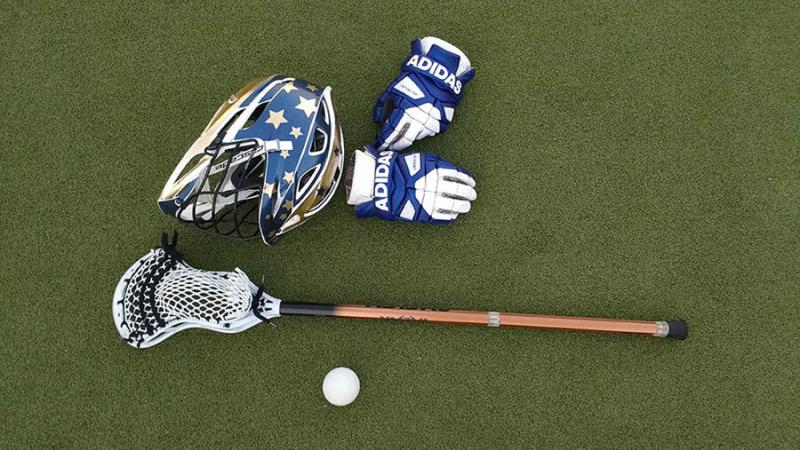
Have confidence initiating catches with your weak top hand when rising with one hand.
Allow the upper weak hand to freely direct the head into position rather than relying too heavily on the lower dominant hand.
Focus on light whipping motions from the top weak hand to whip the head around for the catch.
Put faith in your weak hand’s abilities. Don’t hesitate or second guess its motions.
Exaggerate Your Follow-Through
Completing an aggressive follow-through is key for driving one-handed weak catches into the pocket.
Whiplike follow-throughs give you the best chance of absorbing and controlling errant or off-line catches.
Don’t stop the momentum abruptly on a weak hand catch. Allow extended fluid motions for success.
Full commitment prevents deflating misses and builds confidence catching with either hand.
Change Angles Frequently
Vary the throwing angle often when practicing weak hand clutch catches to build adaptability.
Rapidly switch between standard overhead rises and sidearm arcs to challenge reactions.
The more you diversify catch angles, the quicker weak hand competence develops. Don’t let patterns form.
Execute catches on the move to integrate footwork and motion as well. Mimic game unpredictability.
Put It All Together
With regular practice, weak hand clutch catching skill will reach dominant hand levels.
Strive to seamlessly blend weak hand catches into any clutch rise combo or game trick attempt.
Creatively build catch sequences that capitalize on your newfound ambidextrous abilities.
Soon you’ll be clutching with either hand, expanding possibilities and unlocking your full trick potential. Defenders won’t know what hits them!
Vary Releases: Toss the ball in different ways to keep it unpredictable
Mastering a diversity of ball release types is key for taking your Brine Clutch skills to the next level. Varying releases challenges reactions and keeps defenders guessing.
Start by simply changing up the force and velocity of your throws – mix soft tosses with hard rips to diversify speed.
Work in different throwing motions like overhand baseball styles and shovel passes to alter release points.
Increase degree of difficulty by trying tricky no-look and behind-the-back releases. This builds unpredictability and tests hand-eye coordination.
Change Release Angles

Releasing balls from different angles relative to your body expands your clutch repertoire.
Practice sidearm windups and releasing across your frame instead of just overhead throws.
Whip the stick around your waist or between your legs to put funky spin on release points.
The more you diversify release angles, the less predictable your game will be. Keep defenders off balance.
Utilize Ball Fakes
Incorporate realistic ball fakes on your releases to toy with defenders.
Pump fake rise attempts by aggressively winding up without throwing. Sell the fake then go into your clutch.
You can also fake wrap-around or behind-the-back moves before clutching. Convincing fakes setup easy rises.
Smoothly integrating fakes makes releases wildly unpredictable and gets defenders leaning the wrong way.
Throw Off-Hand
Try clutch releasing with your non-dominant hand once in a while to open up options.
Even if the throw is imperfect, switching hands tests reactions and shows versatility.
Practice scoop throws, shovels passes and quick sticks with the off-hand to build competence.
Ambidextrous releasing ability makes any trick or clutch attempt more dangerous.
Follow Through Completely

No matter what type of release you use on a clutch attempt, fully commit through the finish.
Whether sidearm or overhand, soft or hard throw, complete the throwing motion with gusto.
Full follow-through keeps mechanics consistent across all release varieties.
Don’t cut finishes short or alter motion based on throw type. Follow through fully on all.
Put It All Together
With a deep release repertoire, defenders will never know what to expect from your clutch attempts.
Unpredictability is the key to trick mastery. Seamlessly blend different release types into combos.
Explore funky behind-the-back and no-look releases. Creatively diversify your arsenal.
Soon your varying releases will have opponents’ heads spinning trying to anticipate you. Dominate the game with true releasing versatility!
Increase Reps: Do multiple clutch rise repetitions continuously to build muscle memory
High volume repetitions are key for ingraining proper Brine Clutch technique. Doing multiple continuous reps trains muscle memory and skills needed to perform the trick reliably.
Start by simply trying 5 repetitions in a row of the full clutch sequence – throw, catch, throw, catch.
As you get comfortable with higher reps, aim for sets of 10-15 repetitions without stopping or putting the stick down.
Increase degree of difficulty by incorporating movement and doing reps on the run. Constantly challenge your stamina.
Maintain Proper Form
Resist the urge to get sloppy or deviate from proper mechanics during high repetition sets.
Strictly adhere to ideal throwing, catching and footwork technique even as you get fatigued.
Don’t allow flawed habits to set in. Quality rules over quantity always – stay tight.
Have a friend watch and provide immediate feedback on any form lapses as you rep.
Control Your Breathing
Use controlled breathing rhythms to maintain consistency across long sets of clutch rise repetitions.
Inhale on the catch, exhale on the throw. Establish smooth rhythmic breathing cycles.
Steady oxygen flow prevents rushing the reps and losing form. Breathe easy through fatigue.
Establish breathing + clutch rise synchronization. Match breaths to key phases of the trick.
Increase Speed Gradually
Avoid rushing reps and losing control as you increase repetitions. Build speed slowly in a controlled manner.
Go for accuracy and smoothness first before focusing on velocity. Speed will come.
Quickly stringing together crisp, clean clutches impresses more than hurried sloppy reps.
Establish your rhythm then gradually turn up tempo while maintaining perfect technique.
Strengthen Your Grip

High volume clutch rise repetitions are fantastic for building grip strength needed to excel.
Rep after rep strengthens hands and forearms. Don’t switch hands – push through the burn.
Crush each catch aggressively and maintain firm pressure throughout lengthy sets to maximize gains.
Your iron clutch will soon stand out as opponents’ hands weaken late in games.
Put It All Together
With dedicated practice, rattling off continuous clutch reps will feel natural and effortless.
High repetition training cements proper mechanics through muscle memory developed via volume.
Approach every practice session with a plan to beat your rep records. Break personal bests regularly.
Rack up clutch reps dutifully and soon nobody will match your endurance, power and clutch mastery!
Refine Your Form: Watch videos to identify areas for technique improvement
Refining the nuances in your Brine Clutch technique requires diligently watching video of yourself in action. Analyze footage to spot flaws and make improvements.
Have a friend record you attempting clutch rises from multiple angles – front, back and side views.
Watch videos in slow motion, pausing frequently to pinpoint issues. Note release timing, catching mechanics, body form, etc.
Focus on one area at a time and implement drills to address weaknesses. Then move on progressively.
Isolate Your Release
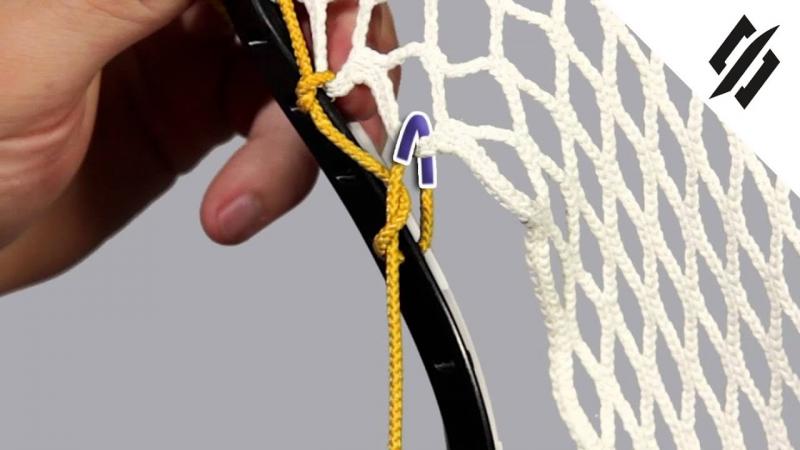
Use video to analyze the exact timing of your ball release when clutch rising.
Does the release sync perfectly with the apex of your wrist snap? Earlier or later in the motion?
Drill releases consciously focusing on that exact ideal release point until it becomes second nature.
Precisely timing the moment the ball leaves your pocket results in smooth controlled rises every time.
Follow Your Head Motion
Don’t allow your head to drop or eyes to wander when attempting clutch rises.
On video, ensure your eyes stay locked onto the ball from release through the catch.
Drill keeping focus by placing objects in your field of view you must ignore and avoid looking at.
This trains your eyes to remain disciplined throughout the trick motion. Laser focus enhances execution.
Check Your Balance
Proper balance from start to finish contributes to flawless clutch rise execution.
Review footage and make sure you remain grounded through your lower body on attempts.
Are you too bouncy or rocking during the motion? Drill stabilizing your base.
Established balanced base + coordinated top = clutch mastery.
Smooth Your Transitions
The hallmark of an elite clutch performer is silky smooth transitions between phases.
When reviewing video, look for any abruptness or hesitation in your motions.
Drill making the movements feel effortless. Each segment should flow seamlessly into the next.
Relaxed transitions disguise your intentions and mystify defenders.
Put It All Together
Meticulously honing technique through video analysis pays major dividends.
Be objective in your self-critique. Identify weaknesses and address them through purposeful training.
Refinement is a lifelong process. Continually refine and evolve your clutch skills.
Soon your form will be unparalleled. Release with confidence knowing your Brine Clutch mechanics are unimpeachable!
Put It All Together: Once mastered, connect clutch rises into creative trick sequences
After honing each segment of the Brine Clutch rise individually, the final step is smoothly chaining them together in seamless sequences.
Start simply connecting 2-3 clutch rise reps in a row. Gradually build up to longer uninterrupted runs of 5+.
Increase degree of difficulty by incorporating direction changes, behind-the-back catches, and different release types into the sequences.
Execute multi-clutch combos on the move at game speed to simulate in-game trick scenarios.
Practice Smooth Transitions
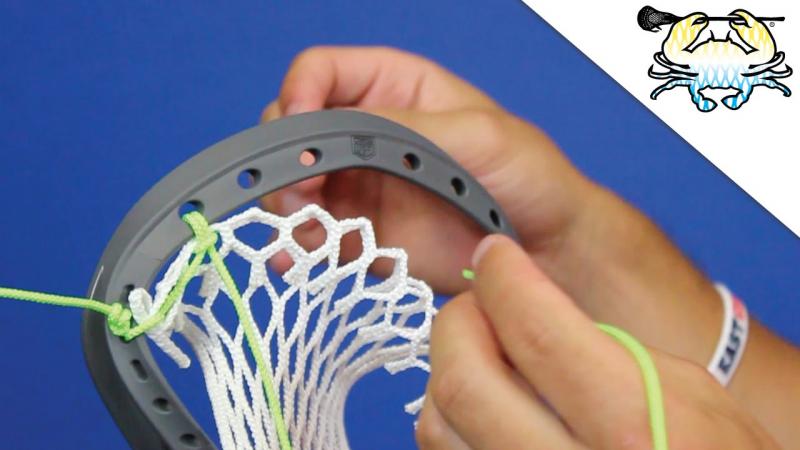
Masterfully transitioning between each segment of the clutch rise is key for fluid sequences.
Concentrate on seamlessly linking the conclude, release, track, flip and catch motions.
No hesitation or abruptness – each phase should melt smoothly into the next.
Maintain flow and rhythm throughout extended clutch rise chains.
Keep Your Eyes Up
Resist glancing downward when connecting multiple clutch rise reps.
Keep your focus skyward on the ball through the entire sequence. Don’t lose eye contact.
The moment you stop tracking the ball is when miscues happen.
Consistent eye discipline results in clean multi-clutch execution.
Follow Through on Every Throw
Completing each throw with a full aggressive follow-through is vital for chaining clutches.
Don’t abbreviate or reduce the follow-through even when quickly transitioning into the next rep.
Maintaining strong finishes keeps mechanics and tempo consistent in combos.
Never sacrifice form just to gain speed. Smoothness enables multi-clutch mastery.
Sell Your Fakes

Integrate realistic ball and head fakes into your clutch rise sequences to toy with defenders.
Pump fake rises then go into your clutch. Sell wrap fake attempts before clutching.
Convincing fakes allow easy uncontested clutches.
Master the misdirection game to combo clutch like a pro.
Unleash Your Creativity
Once clutch rise fundamentals click, explore your creative side designing trick sequences.
Freely blend in new releases, catches, movements and body angles.
See how many clutch reps you can string together before a miss.
With solid skills, the possibilities for wowing crowds are endless. Show off your flair!

